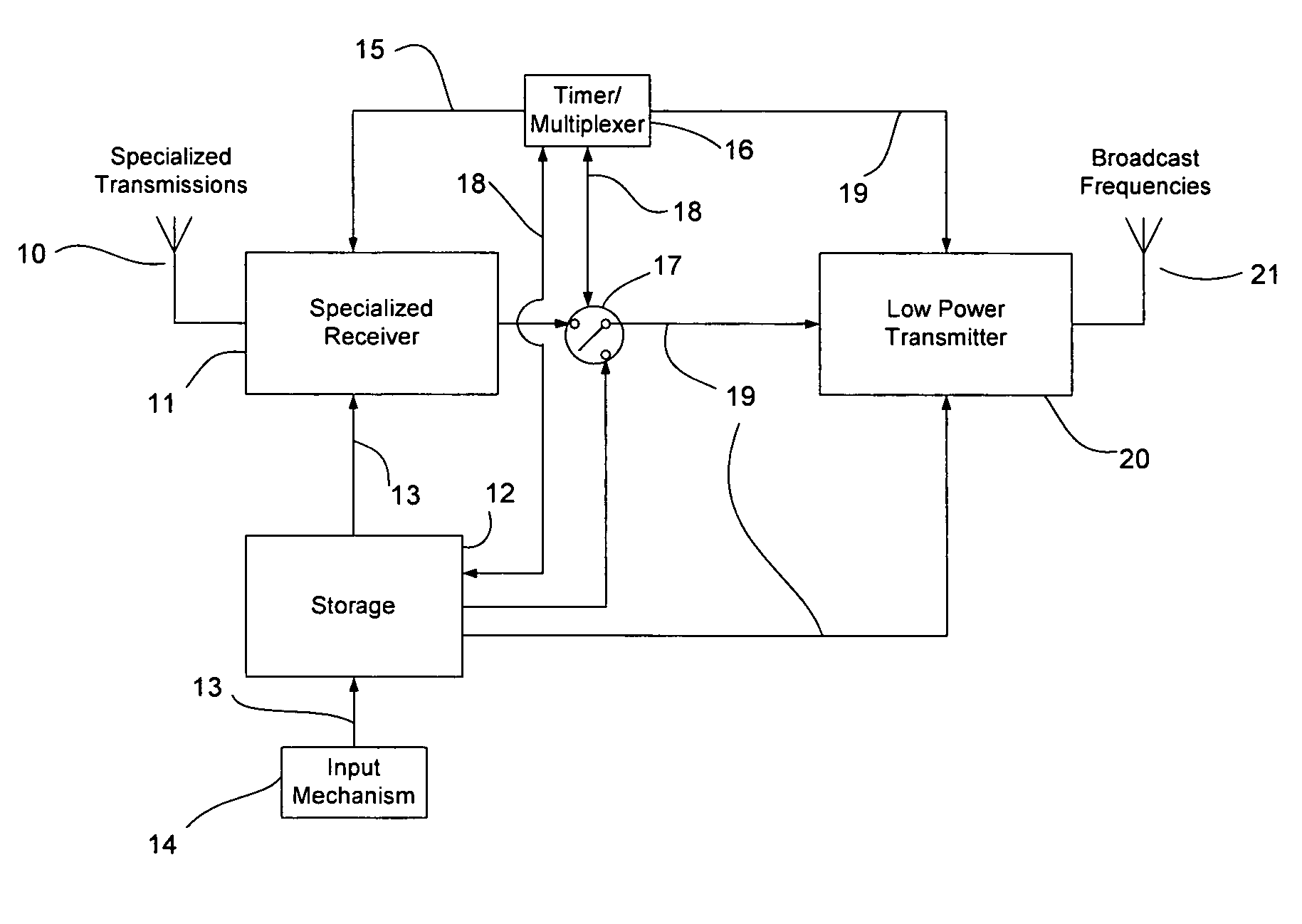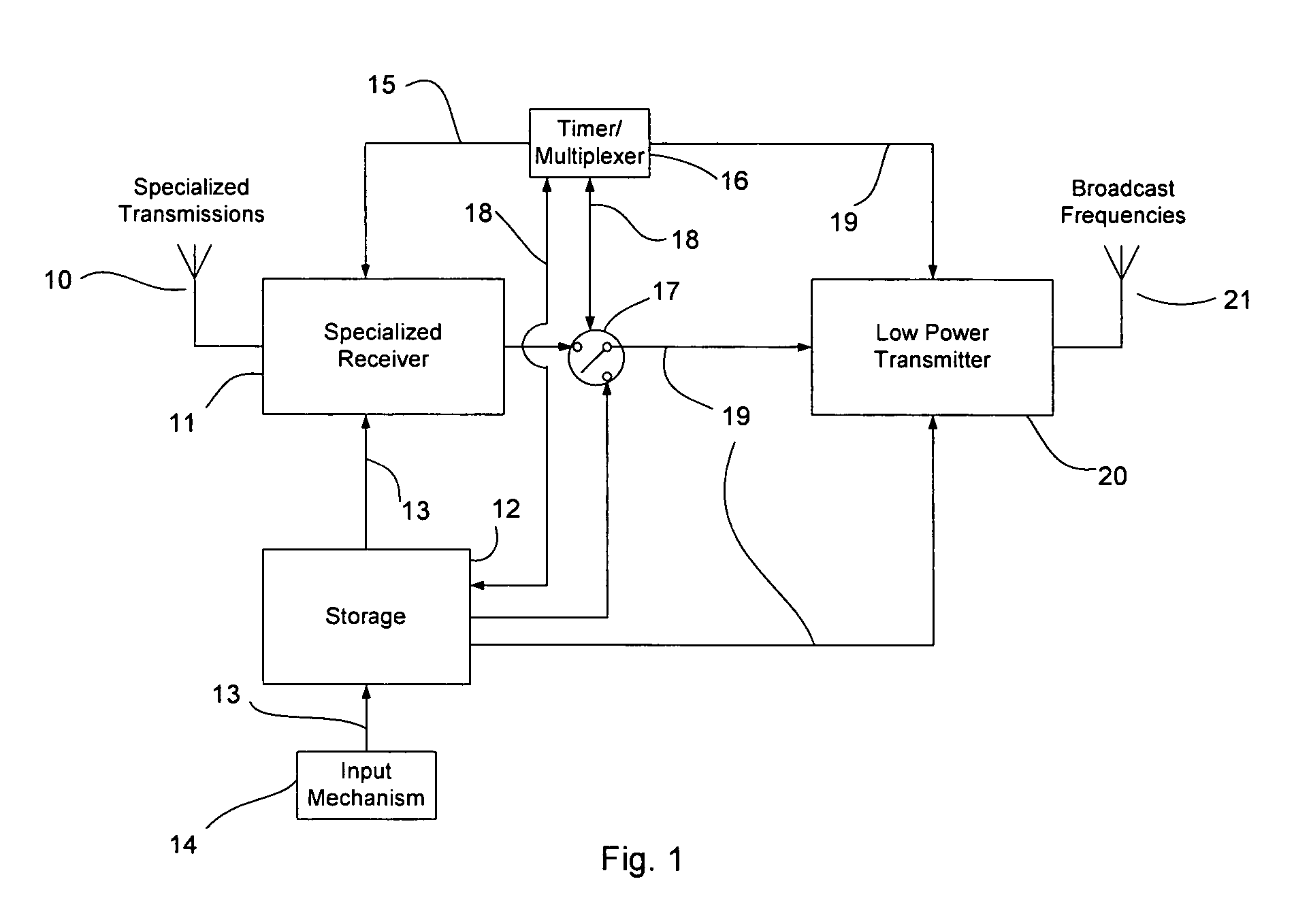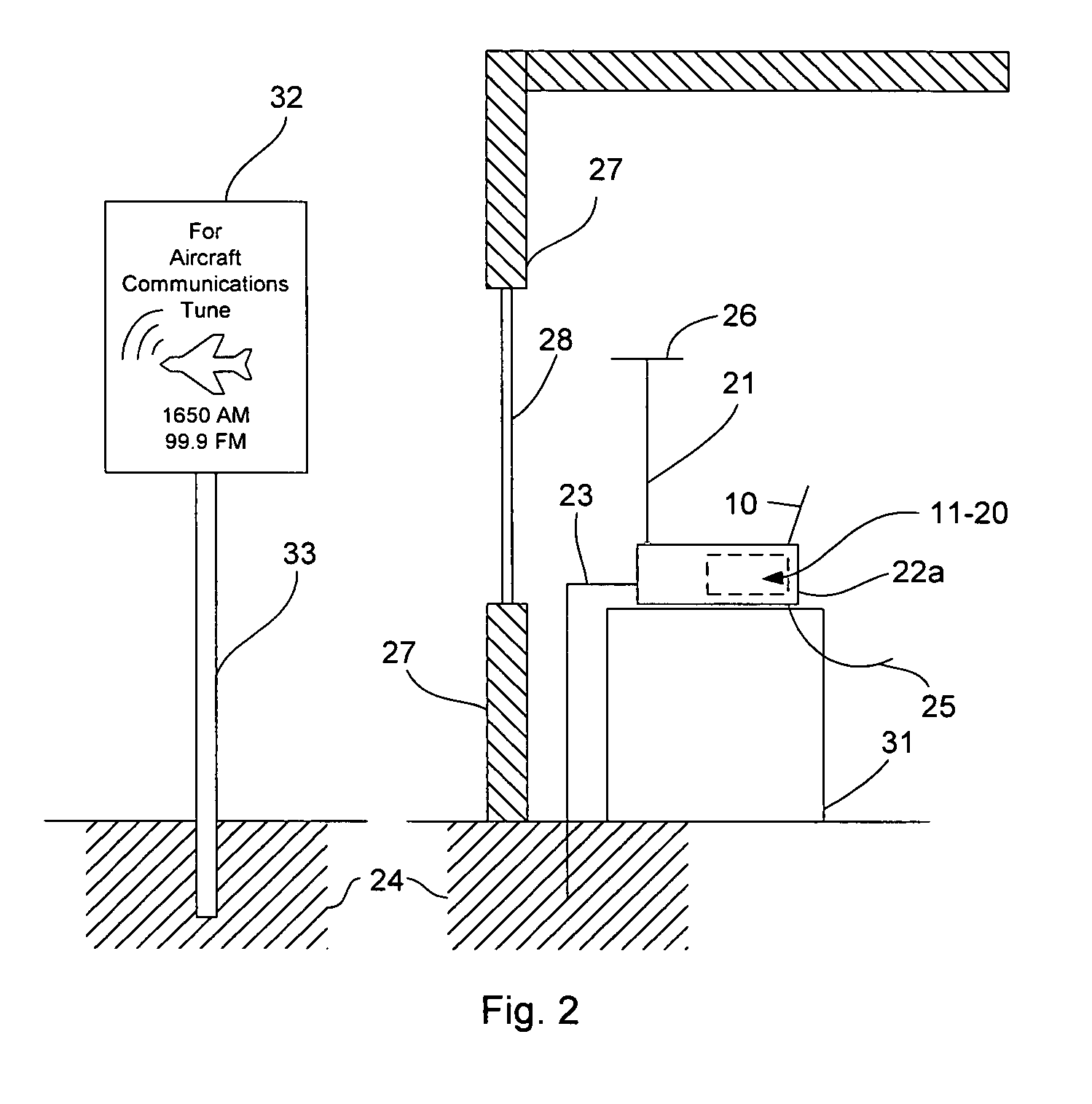Low power radio device for providing access to aircraft communications (or other specialized communications) to the general public via commercial radio bands and receivers
- Summary
- Abstract
- Description
- Claims
- Application Information
AI Technical Summary
Problems solved by technology
Method used
Image
Examples
Embodiment Construction
—FIGS 1-3—PREFERRED EMBODIMENT
[0069]In FIG. 1, receiving antenna 10 collects the specialized frequencies of interest and is connected to receiver 11. Receiver 11 can be digital, analog, or a combination of analog and digital; microprocessor based, software based, or soft radio based. Internal details of receiver 11 are well known to anyone familiar with the state of the art in radio reception. Receiver 11 converts signals from receiving antenna 10 into an intermediate form, either the actual representation in terms of audio, or an AM or FM signal that is suitable for immediate retransmission. The output of receiver 11 is connected to timer / multiplexer switch 17, and receiver 11 is connected via control signals 13, 15 to timer / multiplexer 16 and input mechanism 14. Timer / multiplexer 16 may be a digital machine such as a microprocessor, micro computer, computer, or simply an electronic RC (resistive-capacitive) based timing and switching device.
[0070]Input mechanism 14 is connected to...
PUM
 Login to View More
Login to View More Abstract
Description
Claims
Application Information
 Login to View More
Login to View More - R&D
- Intellectual Property
- Life Sciences
- Materials
- Tech Scout
- Unparalleled Data Quality
- Higher Quality Content
- 60% Fewer Hallucinations
Browse by: Latest US Patents, China's latest patents, Technical Efficacy Thesaurus, Application Domain, Technology Topic, Popular Technical Reports.
© 2025 PatSnap. All rights reserved.Legal|Privacy policy|Modern Slavery Act Transparency Statement|Sitemap|About US| Contact US: help@patsnap.com



